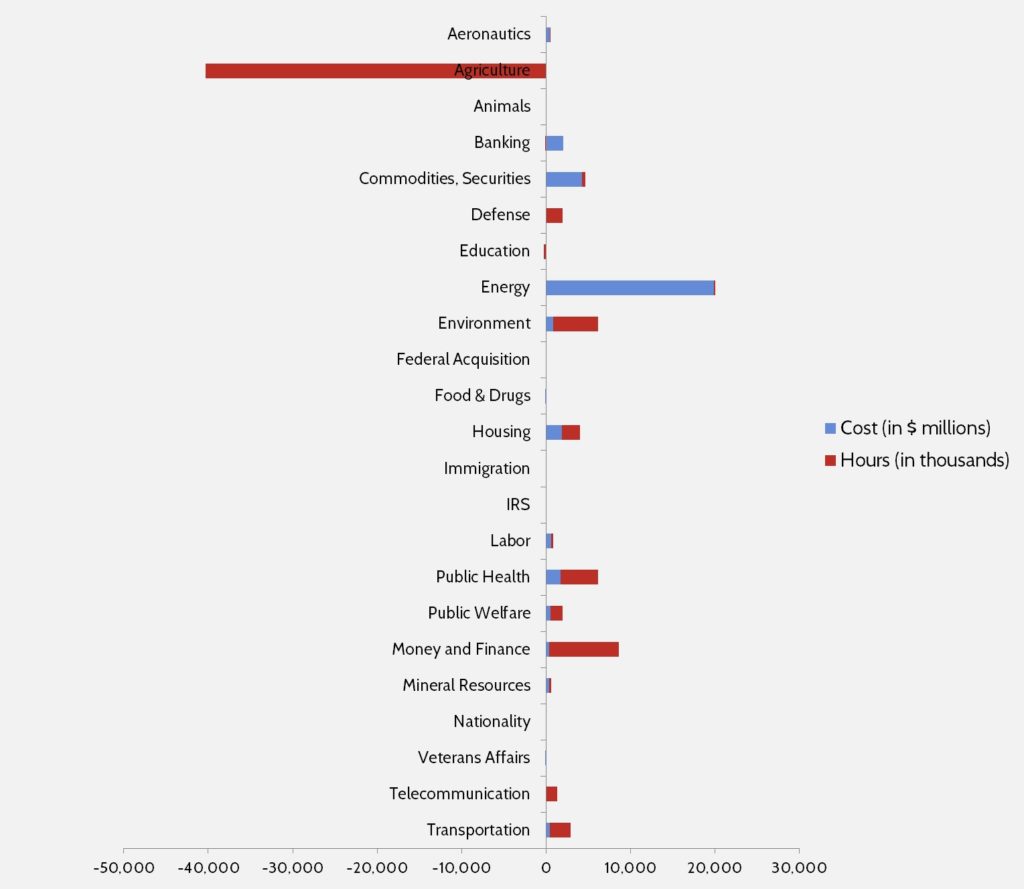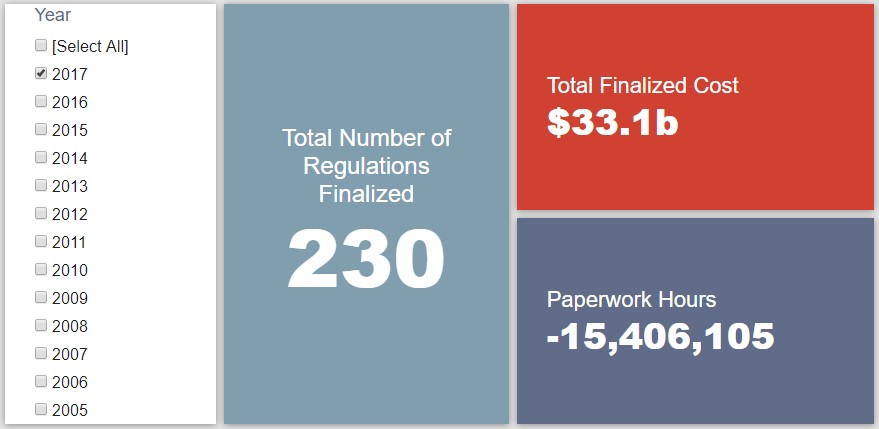Week in Regulation
November 20, 2017
New Paperwork Burdens Abound
The deregulatory streak seen in recent weeks came to a close this last week. While there were a couple of cost-cutting actions, a costly health care rule and a Consumer Financial Protection Bureau (CFPB) measure contributed to increased net costs and paperwork burdens. Overall, agencies published nearly $370 million in costs and roughly 9.2 million hours of new paperwork. The per capita regulatory burden for 2017 is $284.
Regulatory Toplines
- New Proposed Rules: 31
- New Final Rules: 72
- 2017 Total Pages of Regulation: 54,924
- 2017 Final Rules: $33.1 Billion
- 2017 Proposed Rules: $58.3 Billion
The American Action Forum (AAF) has catalogued regulations according to their codification in the Code of Federal Regulations (CFR). The CFR is organized into 50 titles, with each title corresponding to an industry or part of government. This snapshot of final rules (a change from earlier versions) will help to determine which sectors of the economy receive the highest number of regulatory actions.
Tracking Regulatory Modernization
Most of the week’s notable regulatory action came from a trio of payment rules from the Centers for Medicare and Medicaid (CMS). Two of the rules were technically deregulatory actions under Executive Order 13,771. One brings $14 million in net savings and 457,490 fewer paperwork burden hours. The other brings $11.7 million and 171,264 hours of regulatory relief. However, the nearly $300 million in new costs and 1.5 million paperwork burden hours from another CMS rule dwarf the savings founds in the other two rules. Thus far into Fiscal Year 2018, the Department of Health & Human Services currently has roughly $125 million in net annual costs on its regulatory ledger.
Click here to view the administration’s progress under the “one-in, two-out” executive order through the end of Fiscal Year 2017 (which ended on September 30).
Affordable Care Act
Since passage, based on total lifetime costs of the regulations, the Affordable Care Act has imposed costs of $53 billion in final state and private-sector burdens and 176.9 million annual paperwork hours.
Dodd-Frank
One of the primary legacies of Dodd-Frank was the creation of the CFPB. This past week saw two notable events in the young history of that agency: Director Richard Cordray resigning from his post and the official publication of a rule on “Payday, Vehicle Title, and Certain High-Cost Installment Loans.” Beginning with a controversial – and ultimately unconstitutional – recess appointment, Director Cordray’s tenure saw $3 billion in new regulatory costs and 21 million hours of new paperwork. While it does not include an overall, monetized cost estimate, the payday lending rule is a significant swan song for the Cordray era, bringing nearly 8.2 million hours of paperwork.
Click here to view the total estimated revised costs from Dodd-Frank; since passage, the legislation has produced more than 82.9 million final paperwork burden hours and imposed $38.9 billion in direct compliance costs.
Total Burdens
Since January 1, the federal government has published $91.4 billion in compliance costs ($33.1 billion in final rules) and has cut 11.1 million paperwork burden hours (due to 15.4 million in reductions from final rules). Click below for the latest Reg Rodeo findings.












